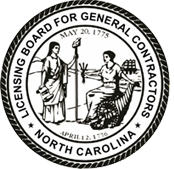Ventilation is a quiet hero in our homes’ health and performance. Often, we are more focused on the beauty of our interiors, the durability of our siding, or the efficiency of our appliances. But behind the scenes, a vital process ensures that our living spaces remain comfortable and free of potential hazards. Building upon a foundation of well-maintained living area ventilation, this exploration dives specifically into one upper-level sanctuary that, when cared for properly, can have a significant impact on the household’s roofing system and attic.
Understanding Attic Ventilation
Before we can appreciate the impact of proper attic ventilation, it’s imperative to understand what attic ventilation is and the how-tos of its working mechanisms. At its simplest, attic ventilation refers to the movement of outdoor air into and out of the attic, typically through successful air circulation and the flow of heat. A properly ventilated attic allows heated air to escape in the summer and moisture in the winter, preventing a buildup that can lead to various issues inside your home.
The Role in Home Health
Attic ventilation indirectly affects the home’s air quality, as it plays a significant role in the movement of air from the bottom to the top of the building, known as the stack effect. In more extreme cases, an unventilated or poorly-ventilated attic can lead to pollutants being sucked into the living areas, potentially causing respiratory issues and allergies.
The Role in Roof Health
Your roof is the first line of defense against the elements. A poorly ventilated attic can cause a buildup of moisture, leading to mold growth and rotting of wood structures. The heat trapped in an unventilated attic during the summer months can also cause shingles and other roofing materials to deteriorate faster.
The Role in Energy Efficiency
Proper attic ventilation promotes energy efficiency within a home. Not only does it help to regulate indoor temperatures, but it also reduces the workload on heating and cooling systems. This can lead to lower energy bills, making proper attic ventilation not just beneficial for the home’s health but also for your wallet.
Signs of Poor Attic Ventilation
Your attic is often the first place where signs of ventilation issues manifest. From apparent clues like mold growth to subtle needs such as increased energy consumption, the symptoms can vary widely but should always be heeded. Recognizing these signs is critical to maintaining a home that is both efficient and safe to inhabit.
Spotting the Red Flags
Common visible indicators include mold on the insulation or sheathing, excessive frost buildup in the winter, or even damp spots above ceiling rafters. Warranting further investigation immediately, these could also lead to a host of issues, including shortened shingle life, unwanted ice dams, and a strain on your HVAC system.
Benefits of Proper Attic Ventilation
The investment in proper attic ventilation is justified by an array of benefits that significantly impact the quality of life within your household. From financial savings to a more pleasant daily environment, these are the rewards awaiting homeowners who prioritize their attic’s air circulation.
Saving Both Energy and Money
In warmer climates, quality attic ventilation can lower your cooling costs by helping your HVAC system operate more efficiently. Proper airflow ensures that your home stays cooler in the summer, reducing the need for artificial cooling. This, coupled with preventing damage caused by moisture, means that a one-time investment in ventilation can lead to long-term savings and a more sustainable household.
Comfort and Air Quality
A well-ventilated attic ensures an even temperature distribution in your home, minimizing hot and cold spots. Additionally, good attic ventilation contributes to the overall air quality of your living spaces. By keeping the air moving, it can prevent the accumulation of allergens and other airborne pollutants that might otherwise settle in your living areas.
Types of Attic Ventilation Systems
There is an assortment of systems and technologies designed to ventilate your attic, and each comes with its own strengths and purposes. Whether using the stack effect and wind to power passive systems or electricity for active fans, it is critical to select the kind that will work best for your home’s unique characteristics and location.
Passive vs. Active Ventilation
Passive systems, such as ridge vents or gable vents, rely on natural processes like thermal buoyancy and wind effects. In contrast, active systems utilize fans powered by solar or electric energy to ensure a more consistent airflow, regardless of outdoor conditions. The choice between these approaches often hinges on your home’s layout, weather patterns, and energy goals.
How to Improve Attic Ventilation
Taking the leap to improve your attic’s ventilation is an investment in your home’s longevity and comfort. But what steps should you take? From assessing your current setup to planning and executing an upgrade, there’s a methodical approach that every homeowner should follow.
Assessment and Needs Identification
The first step in the improvement process is understanding your attic’s current ventilation. Factors such as intake and exhaust vent area, obstructions, and vent types matter greatly. Professional assistance can be invaluable at this stage, helping you identify exactly what your attic requires for optimal ventilation.
Choosing and Installing the Right System
Once you’ve assessed your attic’s ventilation needs, it’s time to choose the right system and proceed with the installation. Selecting quality vents and fans that are appropriate for your home’s size, layout, and climate will be critical to achieving the desired outcomes. From powered gable fans to soffit vents, your choices will be significant in determining the effectiveness of your new ventilation system.
The Importance of Professional Maintenance
Like most home systems, attic ventilation requires routine maintenance to function at its best. Neglecting this component of your home could lead to costly repairs down the line or compromise the health of your living environment. Professional maintenance not only ensures that your system is free of debris and functioning properly but also provides an opportunity to check for other potential issues within the attic space.
Regular Inspections and Cleaning
Professionals can provide regular inspections of your attic to identify and resolve potential ventilation issues before they escalate. Seasonal cleanings will keep the pathways clear for air to flow, preventing blockages that could lead to moisture or heat buildup.
Camel City Roofing: The Roofing Experts
In conclusion, a well-ventilated attic contributes to a home and roofing system that is energy-efficient, comfortable, and safe. Homeowners who take the time to understand, assess, and maintain their attic’s ventilation systems are making a proactive investment in their property and family’s well-being. Assessing your home’s ventilation needs is a crucial component of regular home maintenance, and it’s an area where a little attention can yield significant returns.
Revisit your attic’s ventilation system, take stock of its current state, and heed the signs offering insight into its health. Don’t hesitate to seek professional guidance when needed. With each system adjusted, each treatment to an ill vent applied, you’re inching your way closer to a home environment that is harmonious with nature, efficient in operation, and supportive of a healthy lifestyle for every family member.
Vote for Camel City Roofing in the 2024 Readers’ Choice Awards
Camel City Roofing is proud to be a finalist in the “Roofing Company” category in the 2024 Winston-Salem Journal’s Readers Choice Awards. We would be honored to have your vote, as it is a testament to the quality of service we provide to our community. Thank you for your support!





